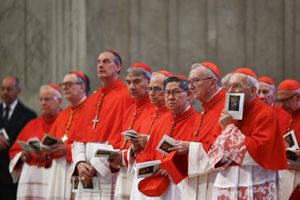The world of dance took center stage as breaking made its long-awaited debut at the Paris 2024 Olympics. This high-energy competition featured 32 dancers from around the globe, including 16 b-boys and 16 b-girls, all vying to become the first-ever Olympic breaking champions.
The atmosphere at the Place de la Concorde was electric, with thousands of spectators filling the arena and moving to the beats of iconic hip-hop tracks. Renowned disc jockeys, DJ Fleg from New York City and DJ Plash from Poland, provided the soundtrack, with music from legends like James Brown and A Tribe Called Quest.
The emcees of the event, Malik Moujouil and Max Oliveira, played their part to hype up the crowd and competitors alike during the grueling hours of competition. NBC’s commentary, handled by Blythe Lawrence and seasoned breakers like David “Kid David” Shreibman, offered insights though some felt they could have highlighted more nuances of breaking.
Yet, the scoring for this new Olympic event stirred quite the controversy. Organizers faced the challenge of creating a judging system for breaking, which is deeply rooted in freestyle culture.
Each of the nine judges used DJ faders to evaluate dancers based on several criteria, including technique, vocabulary, execution, musicality, and originality. Despite initial doubts, the scoring system appeared effective, as no one contested any round results.
Judges valued the performance's artistry and foundational skills, often favoring dancers who could infuse their routines with musicality. For example, veteran French breaker Dany Dann topped every judge's scorecard thanks to his engaging rhythm and presence, even against the physically impressive Australian newcomer J. Attack.
Team USA, representing its rich breaking legacy, didn’t quite shine as hoped. Both b-girls, Sunny Choi and Logan “Logistx” Edra, were eliminated early, overshadowed by other contenders.
On the b-boy side, Jeffrey “Jeffro” Louis and Victor Montalvo progressed to the semifinals, with Montalvo claiming the bronze medal after an impressive battle against Japan’s Shigeyuki “Shigekix” Nakarai. Meanwhile, the champions were crowned with Canada’s Philip “Phil Wizard” Kim and Japan’s Ami Yuasa snatching the titles for b-boy and b-girl, respectively.
Yet, the competition did not come without its notable moments of solidarity among competitors, showcasing the supportive nature inherent to the breaking community. Despite only some advancing to the podium, performers embraced the spirit of friendship and sportsmanship.
Rachael Gunn, also known as Raygun, found herself at the heart of the controversy following her performance, which ended with zero points across three battles. Known for her unique and playful kangaroo-inspired moves, Gunn's score incited widespread debate on judging fairness and the subjective nature of competition.
Andrew Free, Gunn’s father-in-law, voiced his frustration publicly, asserting the judges overlooked critical elements like originality and musicality. He claimed the judging system did not adequately reward variations aligned with breaking's creative spirit.
Gunn herself maintained her approach echos her artistic intent, stating she aimed to express creativity rather than compete with the dynamic and power moves favored by her opponents. “Creativity is really important to me,” she noted, highlighting her commitment to showcasing artistry even under critical scrutiny.
Head judge Martin Gilian, known as MGbility, defended the scoring process. He explained to the media, “Breaking is all about originality and bringing something new to the table,” standing firm on the nature and execution of breaking particularly in this high-stakes environment.
Gunn’s performance gained her widespread empathy and support after she went viral, appealing to both fans and reflective critics. Her effort to represent Australia with courage spoke volumes about her personal artistry.
Despite the disappointment, Gunn wore her underdog status proudly and expressed gratitude for her opportunity on such a prestigious platform. She carried positivity, ardently embracing the chance to create memorable moments on the Olympic stage.
Even after the Olympics, Gunn continued to make waves with her joyful spirit, celebrating her stardom confidently, cracking out moves on the streets of Paris post-competition. Her culture-rich repertoire left lasting impressions among audiences both online and off.
While breaking as an Olympic sport faces challenges, including the critique of its scoring methods, it advances public conversations about art versus competition. The community surrounding breaking maintains its focus on creativity and artistic expression even as it steps onto the global stage.
The pathway for breaking as an Olympic discipline remains uncertain as the world watches how it evolves past Paris 2024. Still, the commitment of dancers like Raygun exemplifies the rising spirit and innovation within this vibrant dance culture.
Overall, the first-time inclusion of breaking at the Olympic Games has opened many conversations about the nature of competition, art, and how judges interpret talent. The breaking battle stage might have found its foothold amid traditional athleticism but with the flair of creativity and individuality intrinsic to hip-hop culture.



